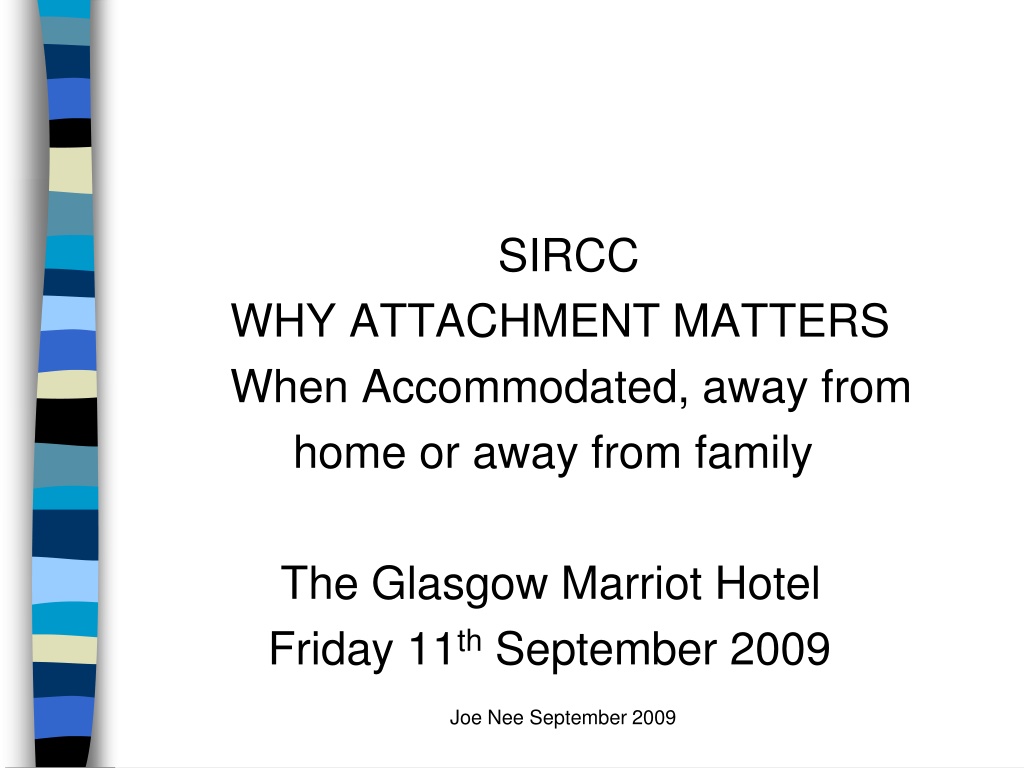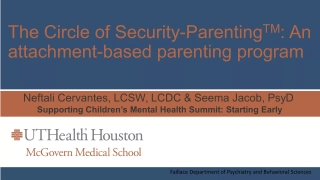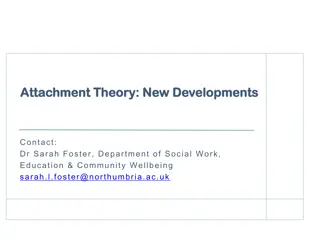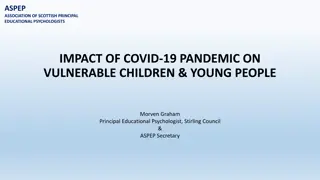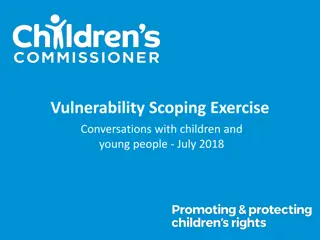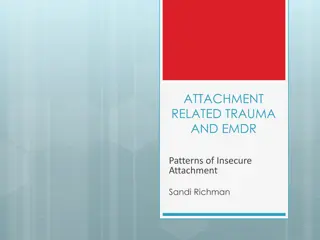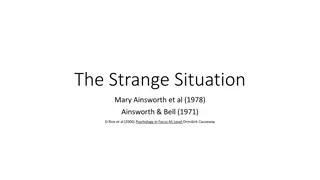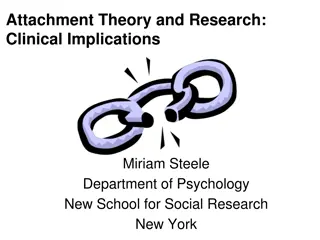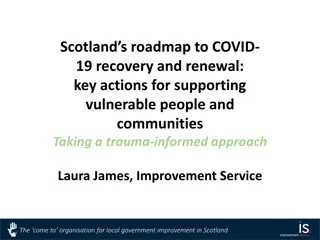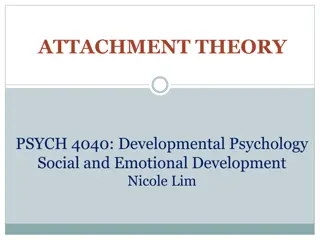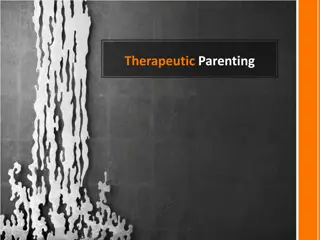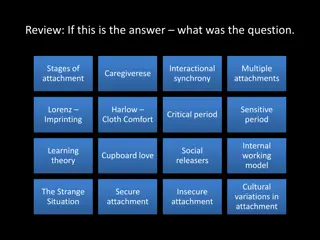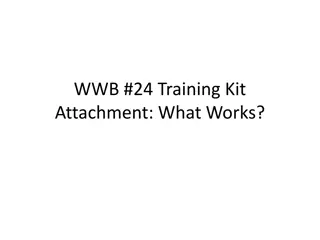Understanding the Significance of Attachment in Supporting Vulnerable Children
Attachment plays a crucial role in the well-being of children, especially those in care. It influences their emotional and behavioral responses, impacting their overall development. This content emphasizes the importance of providing proper support and attachment relationships for children facing adverse experiences who require understanding, skills, and nurturing care for positive outcomes.
Download Presentation

Please find below an Image/Link to download the presentation.
The content on the website is provided AS IS for your information and personal use only. It may not be sold, licensed, or shared on other websites without obtaining consent from the author. Download presentation by click this link. If you encounter any issues during the download, it is possible that the publisher has removed the file from their server.
E N D
Presentation Transcript
SIRCC WHY ATTACHMENT MATTERS When Accommodated, away from home or away from family The Glasgow Marriot Hotel Friday 11th September 2009 Joe Nee September 2009
Attachment Matters TO EVERY HUMAN BEING WHEN: AWAY FROM HOME AT HOME WITH FAMILY OR AWAY FROM FAMILY Joe Nee September 2009
Square 1- To Survive/Thrive We Know Families need support Sometimes children need removed Traditionally alternatives were ; residential, fostering, adoption Carers need understanding, skills, training and SUPPORT The 4 R s are vital
Looked after children in Scotland 13,000 children young looked after 1% of children in Scotland 55% boys 13% residential care settings Estimates - between 20% and 50% young homeless have been in care 75% leave school with no qualifications Joe Nee September 2009
Needs Many children and young people who enter care will display various behavioural and emotional problems as a consequence of previous traumatic experiences that may include sexual, physical and emotional abuse, neglect and family breakdown (Macmillan and Munn 2001) Joe Nee September 2009
ATTACHMENT Relationships Attunement Anxiety-Proximity-Security Communication Physical availability Psychological availability Joe Nee September 2009
Key Concepts-Purchasers and Providers and their Supports Professional Development Understanding attachment/trauma issues for children and young people Understanding the stress/coping strategies of the above children Understand the stress and coping strategies of all carers Help children and young people to learn to adapt to new situations through stress reduction Joe Nee September 2009
KEY CONCEPTS (continued) Provision for the particular care needs of children and young people with attachment/trauma issues Assessment of these care needs Planning realistic provision Providing appropriate options Joe Nee September 2009
Historically The Residential Setting: Is a group living experience Is complex Is socially demanding Is stressful Is under resourced Is not designed to cater for emotional toddlers Joe Nee September 2009
Attachment Informed Provision Attachment offers a framework which can help young people make sense of their negative experiences Schofield argues that there is a conceptual overlap between resilience and attachment theory, thus building for the future (Howe, 1995;Schofield, 2001) Joe Nee September 2009
The Good Bits For many young people the care experience has helped them to compensate for their early experiences For them there was a degree of stability and security in the care experience By chance, some attachment to one or more of their carers may have occurred Joe Nee September 2009
Good Bits (continued) They were removed from a damaging family situation They were provided with relationships, opportunities, options, education, transitions. They were provided with the opportunity to accumulate resilience promoting factors( Numan and Blackburn, 2002) Joe Nee September 2009
Not so good bits However, for too many young people, their experience of care, far from helping them overcome the damaging emotional legacy of family problems, had rendered them unable to form the very relationships they needed so much (Stein and Carey, 1986; Downes 1992) in Stein, 2005. Joe Nee September 2009
Changing Lives (2006) Asked for a positive, research informed approach Recognised the need for a therapeutic approach Asked for Quality Assessment Recognised that everyone is different Recognised that most carers do their best but need training, supervision, help and support Joe Nee September 2009
BUT FOR THE CHILDREN AND YOUNG PEOPLE WITH ATTACHMENT AND/OR TRAUMA ISSUES WE NEED TO DO BETTER GIVEN OUR KNOWLEDGE! Joe Nee September 2009
The Care Experience QUESTIONS Do the children or young people that you look after and have attachment issues and experience life in an environment that; Joe Nee September 2009
The care experience (continued) Considers negative behaviour to be the outcome of unmet needs Considers that the solutions lie in developing relationships with significant others Helps them in the process of resolving their fear of making and breaking contact, loving and being loved Joe Nee September 2009
The care experience (continued) Has attachment, relationships and resilience at it s core Considers each child to be unique (genetics, parenting and early care experience) Strives to be an emotionally regulated, stable and secure environment Has emotionally regulated staff Joe Nee September 2009
Staff Aims Constant proximity Fully accept child regardless of behaviour Understand that challenging behaviour is underpinned by distress Be available, emotionally, psychologically and physically Be nurturing and playful Joe Nee September 2009
Staff Aims (continued) Be empathetic and curious about a child s understanding of their world Deal with the present Not seek to fix or rescue Share joy and pride in child s successes Work at a relational depth which can be emotionally and physically challenging Joe Nee September 2009
The four step plan - Kate Cairns Commitment- level three learning (Gregory Bateson 2000) Personal support through developing close, confiding intimate relationships Professional supervision Work together on all levels (2002) Joe Nee September 2009
THE SCOTTISH SCENE Alan Sinclair-The work Foundation Harry Burns-Chief Medical Officer John Carnochan- Violence Reduction Bill Marshall- Offending/Prisons SIRCC-Accommodated Young People Scottish Attachment in Action
Working together Providers, Purchasers, Carers, Families, Managers, Planners Social Workers, Teachers, Doctors, Psychiatrists, Psychologists, Therapists in all forms National Government Local Government Joe Nee September 2009
Square 1- ConsiderEffectiveCare POSITIVE FUTURES Understand the link between relationships, attachment, trauma and resilience Reflect-Rethink-Repair-Reinforce The younger the child the better SUPPORT carers more effectively Behaviour is communication Challenging behaviour is stress related 4 R s Remember Relationships Rule
